The European Parliament and Council Directive on Radio and Telecommunication Terminal Equipment (1999/5/EC) was revised in 2014 to become the Radio Equipment Directive 2014/53/EU. The R&TTE Directive covers all equipment that uses the radio frequency spectrum, with a few exceptions. It also covers all terminal equipment attached to public telecommunication networks.
The main objective of the Directive was to establish a regulatory framework for placing on the market, free movement and putting into service radio equipment and telecommunications terminal equipment in the territory of the European Union. The revised RE Directive ensures a single market for radio equipment by setting essential requirements for safety and health, electromagnetic compatibility and the efficient use of the radio spectrum. This applies to all products using the radio frequency spectrum.
Transition Period
During the transition period to the new RED (June 13, 2016 to June 13, 2017), manufacturers can introduce new products using either the R&TTE Directive or the new RED Directive. With the transition period soon approaching its end June 13, 2017, manufactures should act now to update their compliance with the new RE Directive.
Main principles of R&TTE Directive
- Assessment of the conformity of a product with the requirements of the Directive is the responsibility of the manufacturer.
- Fixed network terminal equipment must comply with electrical safety and electromagnetic compatibility requirements.
- Radio equipment must effectively use the spectrum and not cause harmful interference. In exceptional cases the EU can introduce additional public interest requirements.
- Requirements are legal, not technical.
Obligation for network operators to publish their interfaces
The Directive obliges operators of public telecommunications services to publish the characteristics of their interfaces, thereby allowing any manufacturer to construct terminal equipment that can be attached to that network.
Obligation for Member States to publish the rules to access the radio frequency spectrum
The radio frequency spectrum is not fully harmonised in the EU. The Directive doesn’t harmonise the spectrum. It is therefore of major interest to manufacturers to be fully aware of national differences in allocation and usage. Member States therefore are committed to publishing those details that allow manufacturers to build products capable of operating in as large a market as possible.
Obligation for manufacturers to inform the end user of intended use and limitations of use
The Directive obliges manufacturers to inform users of the intended use and the limitations of use both on the packaging and in the manual.
Main principles of RE Directive
- Article 3.1(a) Health and safety
- Article 3.1(b) EMC
- Article 3.2 Radio
- Article 3.3 additional requirements when invoked by the European Commission
Harmonised standards provide a presumption of conformity with the essential requirements
Conformity assessment procedures:
- Internal Production Control
- Assessment of technical documentation by a Notified Body (Type Examination)
- Full Quality Assurance Approval
Use of a Notified Body where no radio or Article 3.3 Harmonised Standard exists
